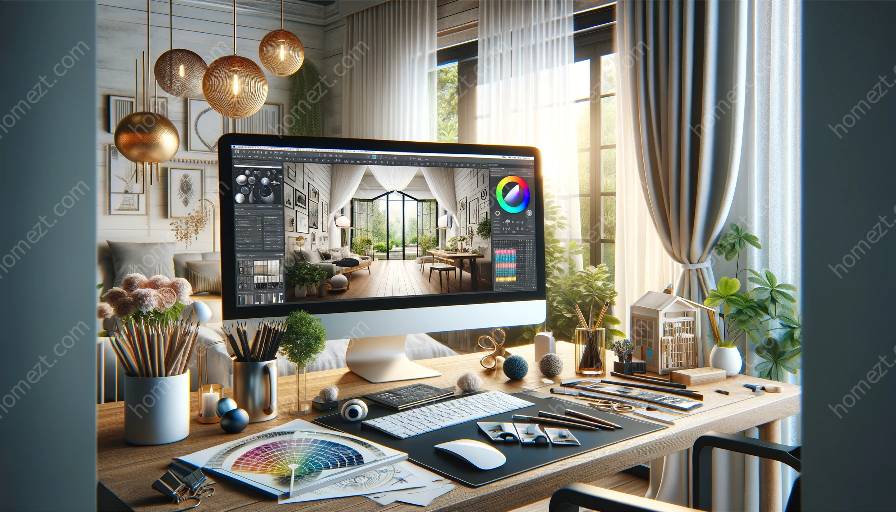Smart technology is revolutionizing the world of interior design, enhancing the way spaces are created and experienced. This cluster explores the latest trends in smart technology, its integration with design software and tools, and its impact on interior design and styling.
Trend 1: IoT Integration
The Internet of Things (IoT) is reshaping interior spaces by enabling seamless communication between devices and smart home systems. In interior design, IoT integration allows for the creation of interconnected environments that adapt to the occupants' preferences and behaviors. Designers can leverage IoT-enabled devices to personalize lighting, climate control, and entertainment systems, enhancing the overall user experience.
Trend 2: Voice-Activated Controls
Voice-activated controls have gained popularity in interior spaces, offering a convenient and hands-free way to interact with smart devices. From adjusting lighting and music to setting room temperatures, voice-activated technology simplifies the way users engage with their surroundings. Interior designers can integrate voice-activated controls into their projects, providing clients with sophisticated and intuitive solutions for managing their living spaces.
Trend 3: Augmented Reality (AR) Visualization
Augmented Reality (AR) technology is transforming interior design by allowing users to visualize and experience design concepts in real time. Design software and tools harness the power of AR to offer immersive experiences, enabling clients to virtually place furniture, experiment with color schemes, and preview spatial layouts before implementation. This trend empowers interior designers to present their ideas with enhanced clarity and interactiveness, fostering better client engagement and decision-making.
Trend 4: Sustainable Smart Materials
Sustainability is a growing focus in both technology and interior design. The emergence of sustainable smart materials, such as energy-efficient lighting systems, eco-friendly textiles, and recyclable building materials, offers designers innovative options for creating environmentally conscious interior spaces. By integrating sustainable smart materials into their projects, designers contribute to the advancement of eco-friendly design practices while making a positive impact on the environment.
Trend 5: Smart Security and Privacy Solutions
As smart technology continues to evolve, so do the considerations for security and privacy within interior spaces. Designers are increasingly integrating smart security solutions, including biometric access control, surveillance systems, and privacy-enhancing technologies, to ensure the safety and confidentiality of occupants. These advancements in smart security and privacy solutions provide a multifaceted approach to enhancing the overall well-being and peace of mind of individuals within interior environments.
Integrating Smart Technology with Design Software and Tools
The integration of smart technology with design software and tools has sparked a new era of creativity and efficiency in interior design and styling. Designers can now leverage advanced software platforms that seamlessly incorporate smart technology features, enabling them to streamline design processes, visualize concepts, and offer clients innovative solutions. Smart technology integration with design software also facilitates real-time collaboration and project management, enhancing the overall productivity and quality of interior design projects.
Furthermore, with the rise of 3D modeling and rendering software, designers can create immersive visualizations of smart technology implementations within interior spaces, allowing clients to experience the full potential of these innovative solutions before implementation. The synergy between design software and smart technology empowers designers to push the boundaries of creativity and functionality, resulting in interior spaces that truly resonate with the needs and aspirations of their occupants.
Conclusion
The evolving landscape of smart technology presents boundless opportunities for interior designers to craft smarter, more responsive, and sustainable spaces. By embracing these emerging trends and integrating them with design software and tools, designers can deliver unparalleled experiences that cater to the growing demand for innovative, connected, and environmentally conscious interior environments.


























